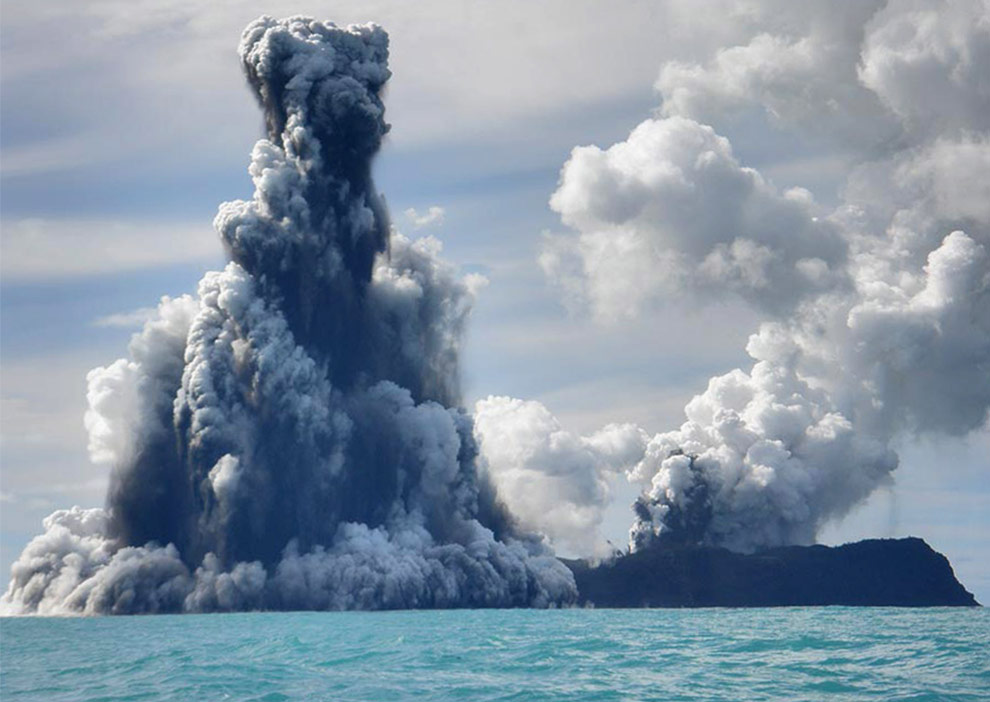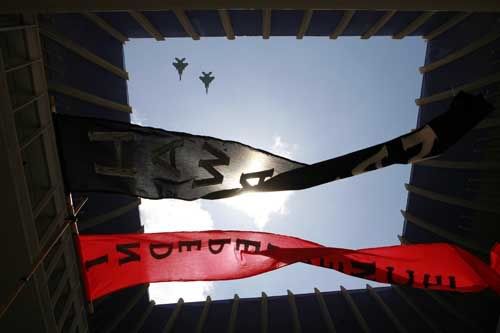All Posts (6434)
Sort by
 The Times Of India - March 19, 2009Hundreds of the state's former governors, legislators, congressmen, judges, entertainers and their families packed the Capitol for the event. During the song "This is aloha," singer Danny Couch persuaded them and the audience to hold hands and sway to the music.The Native Hawaiians outside weren't so cheerful. Longtime protester Richard Pomai Kinney carried his Hawai`i state flag upside-down as a sign of distress."Statehood is a fraud," said Kinney, who was 19 years old at the time. "My parents said Hawai`i would become a place only for the wealthy. Look at it today. There's nothing to celebrate."Full Story Here
The Times Of India - March 19, 2009Hundreds of the state's former governors, legislators, congressmen, judges, entertainers and their families packed the Capitol for the event. During the song "This is aloha," singer Danny Couch persuaded them and the audience to hold hands and sway to the music.The Native Hawaiians outside weren't so cheerful. Longtime protester Richard Pomai Kinney carried his Hawai`i state flag upside-down as a sign of distress."Statehood is a fraud," said Kinney, who was 19 years old at the time. "My parents said Hawai`i would become a place only for the wealthy. Look at it today. There's nothing to celebrate."Full Story Here

 Hawaii was and is the most "diverse state in the Union, yet a place where racial and ethnic lines are often blurred or deemed irrelevant ."http://www.genocidewatch.org/8stages.htmTHIS PROCESS iS KNOWN AS CULTURECIDE and GENOCIDE aka COLONIALISM " GENOCIDE OF NATIONS and COUNTRIES TO MANIPULATE, CONTROL AND RAPE RESOURCES.Hawaii’s diversity applauded at statehood celebrationBy Pat GeePOSTED: 01:30 a.m. HST, Mar 19, 2009Gov. Linda Lingle called Hawaii's unique racial and cultural diversity one of its most resonant contributions to the world during a celebration yesterday of the signing of the Hawaii Admission Act, which paved the way for statehood 50 years ago.Mixed Feelings On Hawaii Statehood Anniversary50 years ago President Dwight Eisenhower signed the bill allowing Hawaii to become a state, some celebrated while some protested.[ Watch ]Lingle addressed a special joint legislative session and an overflow crowd at the state Capitol House Chamber as part of a yearlong commemoration by the Hawaii 50th Anniversary of Statehood Commission. Honorees included a virtual parade of who's who in Hawaii, many of them recognized as the "50 Voices of Statehood," a video anthology created by the commission.President Dwight Eisenhower signed the Admission Act on March 18, 1959, paving the way for Hawaii residents to vote overwhelmingly in favor of the bill June 27. Eisenhower officially proclaimed Hawaii the 50th state on Aug. 21.A group of 30 protesters held its own press conference nearby prior to the Capitol event but did not disrupt the ceremony. The Hawaiian Independence Action Alliance, a coalition of 10 groups organized by Lynette Cruz, opposed the "fraudulence of the history being celebrated at the capitol," a release said.Senate President Colleen Hanabusa and House Speaker Calvin Say joined the governor in applauding Hawaii for being, in Lingle's words, "a place like no other, with a people like no other.""Hawaii was and is in many ways a simple place with complex issues, and in many ways is defined by our contradictions," Lingle said. "We are isolated geographically, yet we serve as a vital bridge between the mainland United States and Asia-Pacific region. ... We are the most diverse state in the Union, yet a place where racial and ethnic lines are often blurred or deemed irrelevant ..."Our differences are our strength and they create the vibrant tapestry of our culture," providing "a model of tolerance ahead of its time," she said.Hawaii has also provided "a model of community" in being able to pull together to meet challenges. Perhaps facing the biggest obstacle since 1959 in the economic crisis today, the entire community will need the same determination and hard work to achieve stability, Lingle added.Cassidy Apo, 11, of Mid-Pacific Institute thought the ceremony "pretty cool." One of the few youngsters to attend the event, she was spending the day with her dad, City Councilman Todd Apo, who represents West Oahu and the Leeward Coast.Cassidy Apo said she wants to be a social studies teacher one day and, after listening to the speeches, found it "amazing" that so much was accomplished in 50 years.She said, "Our best feature is our culture. Hawaii is really unique and we can do a lot to help the nation ... (President Barack) Obama knows Hawaii's problems and can help make it better. He can use the experience he had living in different places to make the nation a better place."Also in attendance were members of the state's first legislature, and living former governors and first ladies.http://www.starbulletin.com/news/hawaiinews/20090319_hawaiis_diversity_applauded_at_statehood_celebration.html
Hawaii was and is the most "diverse state in the Union, yet a place where racial and ethnic lines are often blurred or deemed irrelevant ."http://www.genocidewatch.org/8stages.htmTHIS PROCESS iS KNOWN AS CULTURECIDE and GENOCIDE aka COLONIALISM " GENOCIDE OF NATIONS and COUNTRIES TO MANIPULATE, CONTROL AND RAPE RESOURCES.Hawaii’s diversity applauded at statehood celebrationBy Pat GeePOSTED: 01:30 a.m. HST, Mar 19, 2009Gov. Linda Lingle called Hawaii's unique racial and cultural diversity one of its most resonant contributions to the world during a celebration yesterday of the signing of the Hawaii Admission Act, which paved the way for statehood 50 years ago.Mixed Feelings On Hawaii Statehood Anniversary50 years ago President Dwight Eisenhower signed the bill allowing Hawaii to become a state, some celebrated while some protested.[ Watch ]Lingle addressed a special joint legislative session and an overflow crowd at the state Capitol House Chamber as part of a yearlong commemoration by the Hawaii 50th Anniversary of Statehood Commission. Honorees included a virtual parade of who's who in Hawaii, many of them recognized as the "50 Voices of Statehood," a video anthology created by the commission.President Dwight Eisenhower signed the Admission Act on March 18, 1959, paving the way for Hawaii residents to vote overwhelmingly in favor of the bill June 27. Eisenhower officially proclaimed Hawaii the 50th state on Aug. 21.A group of 30 protesters held its own press conference nearby prior to the Capitol event but did not disrupt the ceremony. The Hawaiian Independence Action Alliance, a coalition of 10 groups organized by Lynette Cruz, opposed the "fraudulence of the history being celebrated at the capitol," a release said.Senate President Colleen Hanabusa and House Speaker Calvin Say joined the governor in applauding Hawaii for being, in Lingle's words, "a place like no other, with a people like no other.""Hawaii was and is in many ways a simple place with complex issues, and in many ways is defined by our contradictions," Lingle said. "We are isolated geographically, yet we serve as a vital bridge between the mainland United States and Asia-Pacific region. ... We are the most diverse state in the Union, yet a place where racial and ethnic lines are often blurred or deemed irrelevant ..."Our differences are our strength and they create the vibrant tapestry of our culture," providing "a model of tolerance ahead of its time," she said.Hawaii has also provided "a model of community" in being able to pull together to meet challenges. Perhaps facing the biggest obstacle since 1959 in the economic crisis today, the entire community will need the same determination and hard work to achieve stability, Lingle added.Cassidy Apo, 11, of Mid-Pacific Institute thought the ceremony "pretty cool." One of the few youngsters to attend the event, she was spending the day with her dad, City Councilman Todd Apo, who represents West Oahu and the Leeward Coast.Cassidy Apo said she wants to be a social studies teacher one day and, after listening to the speeches, found it "amazing" that so much was accomplished in 50 years.She said, "Our best feature is our culture. Hawaii is really unique and we can do a lot to help the nation ... (President Barack) Obama knows Hawaii's problems and can help make it better. He can use the experience he had living in different places to make the nation a better place."Also in attendance were members of the state's first legislature, and living former governors and first ladies.http://www.starbulletin.com/news/hawaiinews/20090319_hawaiis_diversity_applauded_at_statehood_celebration.html

I think I just confused my supervisor as I asked her if she saw those Caucasian dolls dancing like how Caucasian people do, or the Black dolls of how Popolos like to dance, or if she saw the Japanese, Chinese or even Mexican dolls. She asked if that was something new.Then I told her they actually don't exist but these "Hawaiian" ones do. She asked what did that mean to me, and I told her what hula is. She said, "maybe that lady is from Hawaii?" Hell no, she wasn't! Although I understand that perhaps a person from Hawaii may have those on their dashboard (certainly not an abundance of them) but I seriously doubt this person was a local, especially since locals, or should I say a particular ethnic group (or two) like to have those faux "Ikaika" helmets.I have yet to see other ethnic groups portrayed in that manner, where things of their culture that have either religious significance or some other type of cultural value are commercialized and seen as "cute", "endearing" or the worse, as many have told me...."flattering!"
 HONOLULU - There was a major event at the state Capitol Wednesday marking the 50th anniversary of Hawai`i becoming a state, but it was not a day to celebrate for everyone."The state of Hawai`i is not a state, and although it has pretended to be for 50 years it is not a state because there was never any lawful turnover from the Hawaiian Kingdom," protestor Leon Siu said.SEE THE FULL STORY HERE
HONOLULU - There was a major event at the state Capitol Wednesday marking the 50th anniversary of Hawai`i becoming a state, but it was not a day to celebrate for everyone."The state of Hawai`i is not a state, and although it has pretended to be for 50 years it is not a state because there was never any lawful turnover from the Hawaiian Kingdom," protestor Leon Siu said.SEE THE FULL STORY HERE



 I've invested years of letting them grow to that point, to have this dumb K____n painter who does half ass jobs pull it down, and now, screaming because of nature. Fuck, go back to where you came from them. Stupid shit. Fuck I am so mad at this whole ordeal.The good thing is that Cyndie said she really understands and how much I've put into the plants. They really have no fucking idea. Getting um passed agriculture in some of the cases, having the fucking non-English speaking gardeners butcher them all the time, and the painters, and the city official complain because of the fire extinguisher, having the mailman politely ask me to trim it. Fuck, I can't wait till this planet is destroyed thanks to fuck heads like these! I want their descendants to suffer because of their fucking desire to build over nature!
I've invested years of letting them grow to that point, to have this dumb K____n painter who does half ass jobs pull it down, and now, screaming because of nature. Fuck, go back to where you came from them. Stupid shit. Fuck I am so mad at this whole ordeal.The good thing is that Cyndie said she really understands and how much I've put into the plants. They really have no fucking idea. Getting um passed agriculture in some of the cases, having the fucking non-English speaking gardeners butcher them all the time, and the painters, and the city official complain because of the fire extinguisher, having the mailman politely ask me to trim it. Fuck, I can't wait till this planet is destroyed thanks to fuck heads like these! I want their descendants to suffer because of their fucking desire to build over nature!
